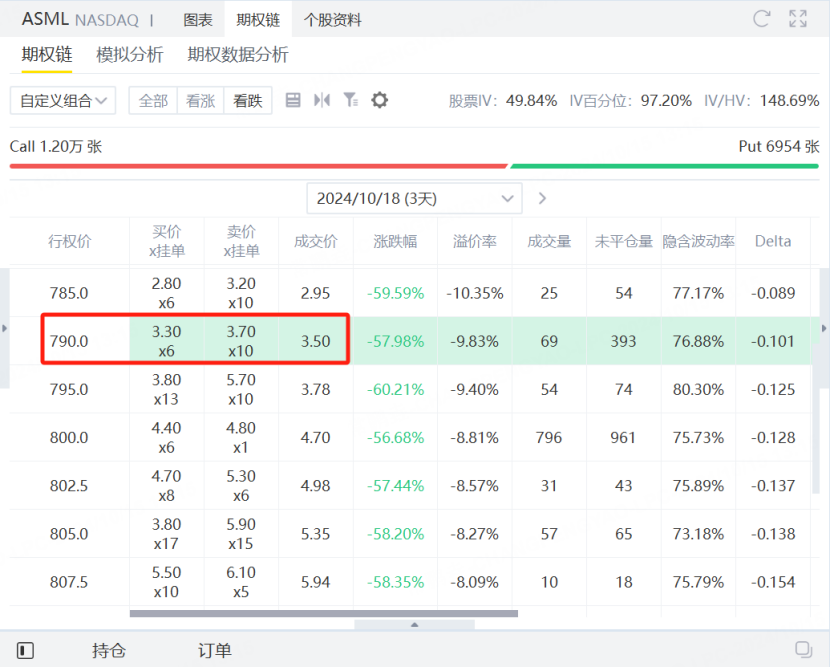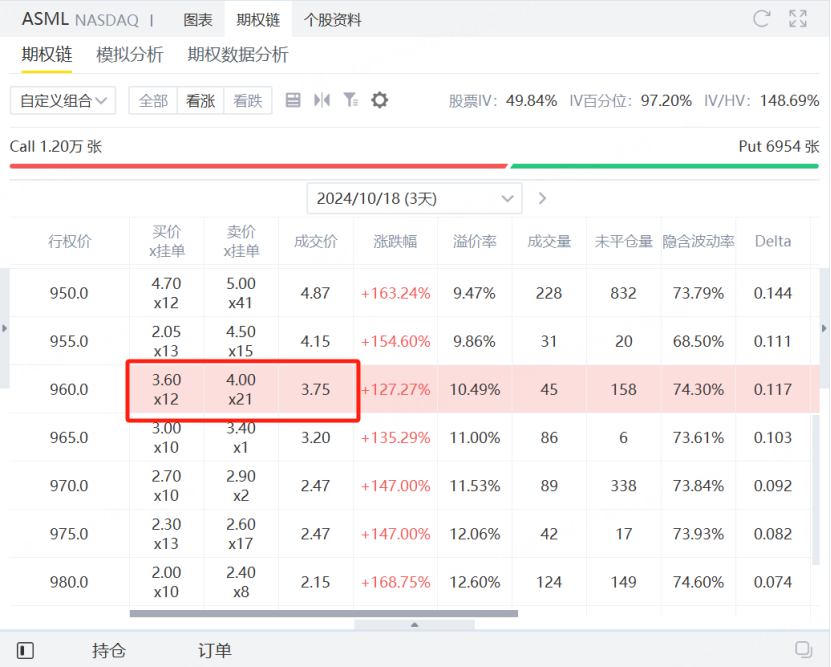ASML Earnings Ahead! How to Bet on Volatility with Options?
$ASML Holding NV(ASML)$ is set to announce its Q3 earnings on October 16. The market expects the company to report a 7% year-on-year revenue increase, reaching €7.1 billion.
ASML manufactures lithography machines that are crucial for semiconductor production, making it a key player in the AI boom.
Long-Term Outlook
This year, ASML’s stock has risen 11%, though it has seen some recent declines. Hargreaves Lansdown's stock research head, Derren Nathan, points out that ASML's revenue this year has lagged behind 2023 levels.
In July, ASML reported Q2 revenue of €6.24 billion, down from €6.9 billion the previous year, with net profit dropping from €1.94 billion to €1.58 billion. Analysts expect Q4 revenue to rise over 24% quarter-on-quarter, reaching €8.8 billion.
Nathan noted,
“The company hopes for a turnaround in microchip manufacturing system sales in the last two quarters to maintain overall revenue for 2024.ASML's technological leadership allows it to benefit from long-term trends like AI. However, some major customers face their own challenges, so investors will be keenly watching for any signs regarding next year's outlook, with further growth anticipated.”
Morningstar, a respected rating agency, is optimistic about ASML’s long-term prospects. Analyst Javier Correonero mentioned that ASML’s threshold for orders to meet the midpoint of its FY2025 guidance isn’t too high. He projects that ASML’s revenue for FY2025 will hit €36.7 billion, within the guidance range of €30 to €40 billion.
It’s worth noting that investors and analysts are also keen to understand the impact of Intel’s setbacks on ASML. $Intel(INTC)$ likely ASML’s third-largest customer, recently postponed plans for a wafer fab in Germany. In the long run, Morningstar isn’t overly concerned, as other players will seize opportunities if Intel continues to face issues.
The options market is pricing in a potential post-earnings move of ±6.3% for ASML, slightly higher than the historical average. Over the past 12 quarters, options have overestimated ASML's earnings volatility 50% of the time. The market predicts an average price movement of ±4.9% after earnings, while the actual average has been 5.1%. This indicates that ASML's stock typically moves more dramatically after earnings than options suggest.

What is a Straddle Strategy?
A long straddle strategy involves buying both out-of-the-money call and put options. The call option has a strike price above the current market price, while the put option has a strike price below it. This strategy has significant profit potential since the call can benefit from unlimited upside if the stock price rises, while the put can profit if the stock price falls. The risk is limited to the premiums paid for the two options.
For a short straddle, an investor sells both an out-of-the-money put and an out-of-the-money call. This neutral strategy has limited profit potential. If the stock price stays between the breakeven points, the strategy can be profitable. The maximum profit is equal to the premium for selling the two options minus the transaction cost.
1.Short Straddle Example with ASML
Shares ASML are currently trading at $872.27. Investors can implement a short straddle strategy by:
Step 1: Sell a put option with a strike price of $790 for a premium of $350.

2.Profit and Loss Potential
- Maximum Profit: Total premium collected, which is $725. When the price of ASML stock is between $790 and $960, the put and call options sold will not be exercised and the seller will keep all premiums.
- Maximum Loss: The loss is theoretically unlimited because there is no limit to the stock price. If ASML drops below $790 or rises above $960, llosses will begin to mount.
- Downside risk (stock price falls below $790) : Loss = $790 - actual stock price - $725 (premiums received)
- Upside risk (stock price over $960) : Loss = actual stock price - $960 - $725 (premiums received)
3.Breakeven Points
- Downside Breakeven: $790 - $725 = $64.27. If ASML shares fall to $64.27, the seller no longer makes a profit, and further declines will result in a loss.
- Upside Breakeven: $960 + $725 = $1,685. If ASML's share price rises to $1,685, the seller no longer makes a profit, and the continued rise will result in a loss.
Conclusion
If ASML's price stays between $790 and $960, the investor will profit from the premiums. However, significant price movements beyond these limits can lead to substantial losses, highlighting the inherent risks of this strategy.
Disclaimer: Investing carries risk. This is not financial advice. The above content should not be regarded as an offer, recommendation, or solicitation on acquiring or disposing of any financial products, any associated discussions, comments, or posts by author or other users should not be considered as such either. It is solely for general information purpose only, which does not consider your own investment objectives, financial situations or needs. TTM assumes no responsibility or warranty for the accuracy and completeness of the information, investors should do their own research and may seek professional advice before investing.


